French painter Henri Matisse once wrote, “There are always flowers for those who want to see them.” Well, it’s one thing to see them and another to be able to arrange them. So if the Matisse in you has ever wondered how to create a more refined floral display, look no further. As a lead up to October’s spectacular, museum-wide Fine Arts and Flowers exhibition, we asked Richmond floral designer and horticulturist extraordinaire David Pippin to share some simple tips and tricks of the trade that you can use for any floral arrangement. If his tutorial is as empowering to you as it was to us, then you will be well on your way to creating beautiful floral arrangements.
Photography by Travis Fullerton © 2018 Virginia Museum of Fine Arts
MATERIALS
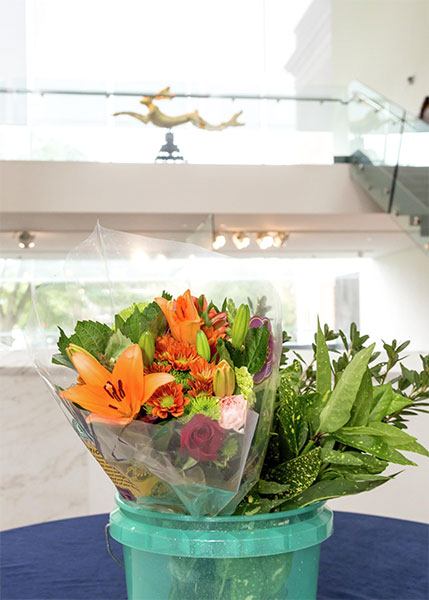
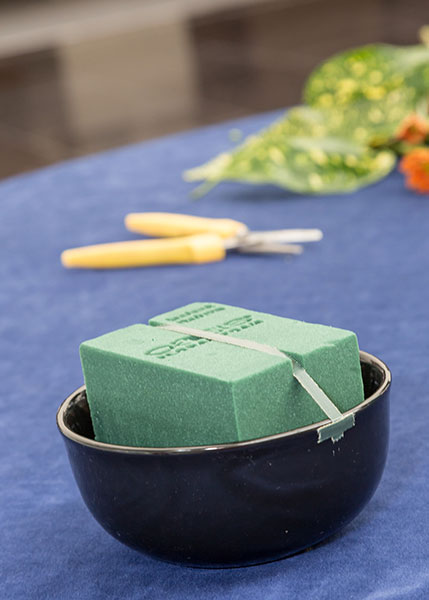
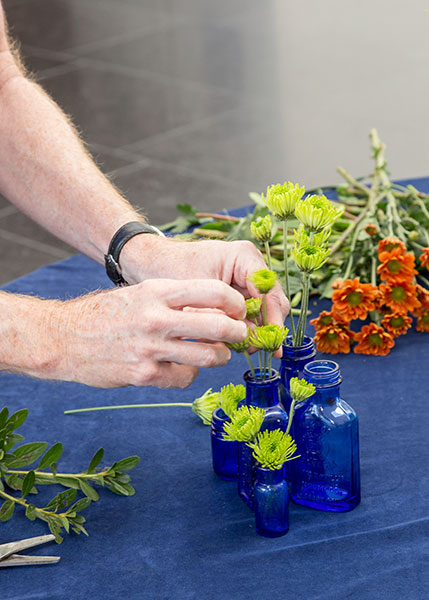
Above: When it comes to flower arranging, David says, “The more unusual something is, the more it catches my eye.” Shown, from left: $20 market flower bunch: Asiatic lily, carnation, hydrangea, alstroemerias, rose, and spray mums. Foliage: aucuba, azalea. Materials: ceramic bowl, absorbent flower foam, a pair of floral shears, and antique medicine bottles in various sizes.
PREPARATION
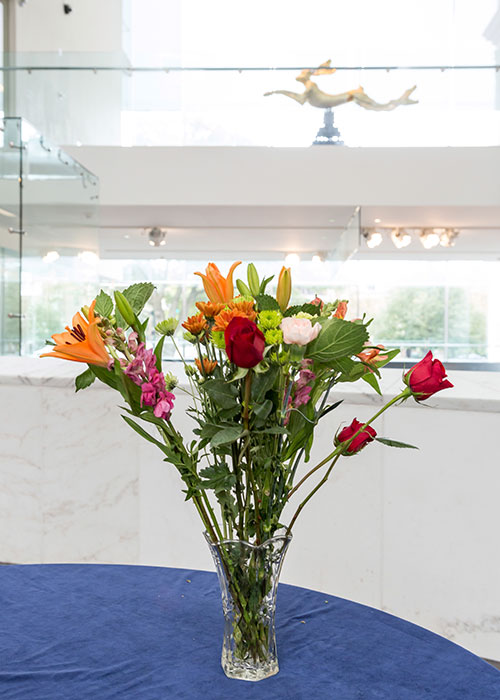
Unwrapping a bunch of flowers from the florist, farmer’s market, or grocery store and dropping them in a vase is what David calls “plunking.” In his demonstration, David created three different and stunning arrangements out of the same $20 market bunch. To avoid being a plunker, here are three simple options:
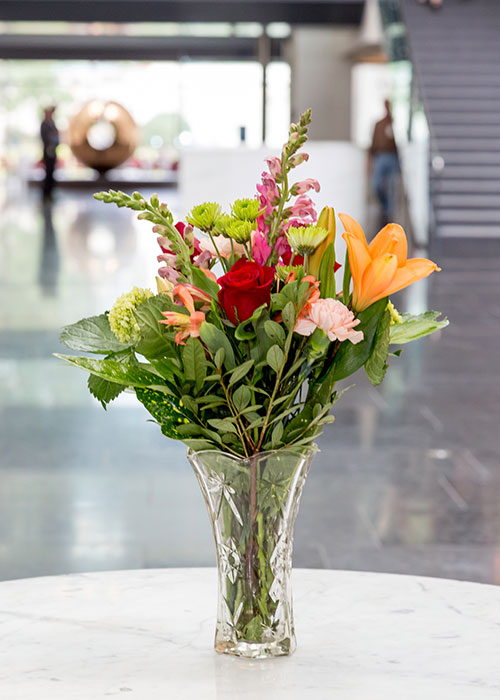
-
- Vase: Start with greenery for your base. Cut foliage from the garden to create a base/holder for your flowers; cut flower stems shorter to be in proportion to the vase.
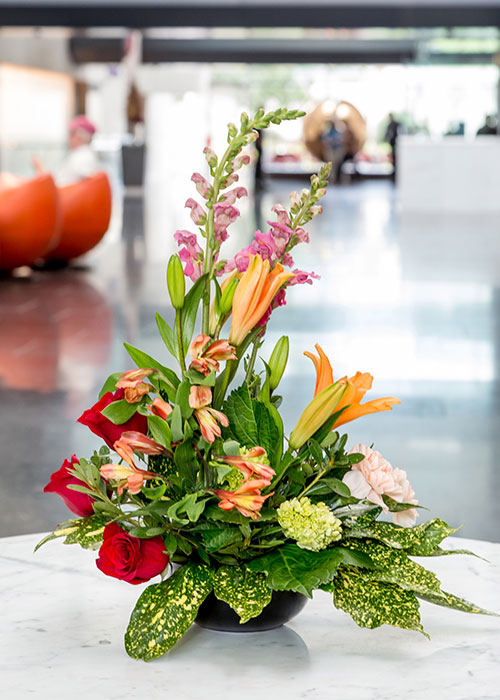
-
- Bowl or Basket: Arrange the flowers artistically in wet floral foam in a water-tight container by cutting the stems and inserting them into the foam about ½”-¾”. Larger flowers should be near the base and smaller stems should be longer and farther out from the center. Fill in with foliage. *Pro Tip: To avoid rot, don’t position foliage leaves under water.
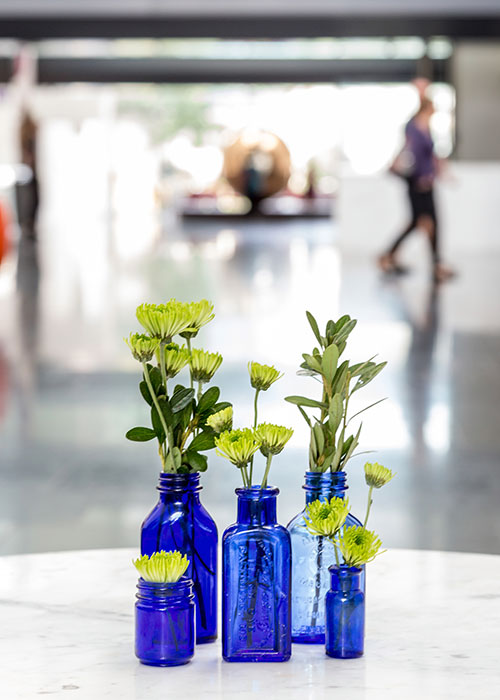
- Bottles: Cut the stems shorter and place them in a group of small containers like vintage bottles or jars. These are great for a window sill or a simple centerpiece.
PRO TIPS
What types of flowers or colors complement each other and which ones clash?
Mixed bunches that one purchases are usually flowers that work well together. If you’re picking out individual stems to arrange, look for colors that you like and ones that go well with your décor. I like using a variety of shapes and textures, even if I’m doing a monochromatic color scheme. Don’t be afraid to experiment. I’ve seen some pink and orange combinations that are stunning!
What types of flowers or herbs/shrubbery/foliage would you suggest or recommend this time of year?
Using foliage from the landscape makes florist flowers look more like garden flowers. Some herbs that work well are rosemary, lavender and even parsley in smaller arrangements. Favorite shrubs to use for foliage are Aucuba, Azalea, Arborvitae, Poet’s Laurel, Abelia, Ligustrum, and Nandina.
Any out-of-the-box combinations or experimentation that you would encourage?
The more unusual something is, the more it catches my eye—whether it’s color, varietal, rarity, etc. You can even try adding some fruits and vegetables to your arrangement. They may be put on wooden skewers and inserted into the arrangement or used beside the arrangement as an accessory to complement the flowers and foliage. Mixed yellow flowers with lemons, gold apples, yellow squash, and yellow peppers make a big statement!

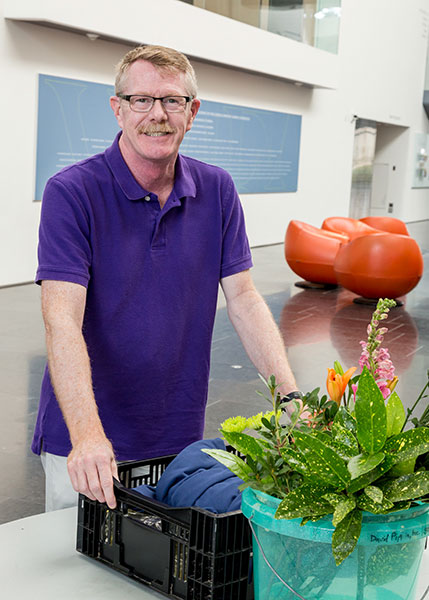
BIO
David Pippin was born and raised in Louisa County, Virginia. He graduated from Virginia Tech in 1983 with a Bachelor of Science in Agricultural Education. Prior to founding David Pippin, Inc. in 2000, he became known for his knowledge and creative talents in a variety of horticultural and educational venues in the Richmond area. David is a sought-after designer of inspired floral arrangements, a popular consultant on garden design, a provider of garden-themed hands-on programs for children and adults, as well as an educator with a wide range of horticultural knowledge and experience. In addition to running David Pippin, Inc., he is a facilitator and consultant for Virginia Agriculture in the Classroom, providing teachers with lessons to help students understand where our food and fibers are grown. He is also an adjunct professor in the Horticulture Department at J. Sargeant Reynolds Community College where he teaches floral design. David is currently the floral designer for The Executive Mansion of Virginia where he provides floral arrangements for their events.